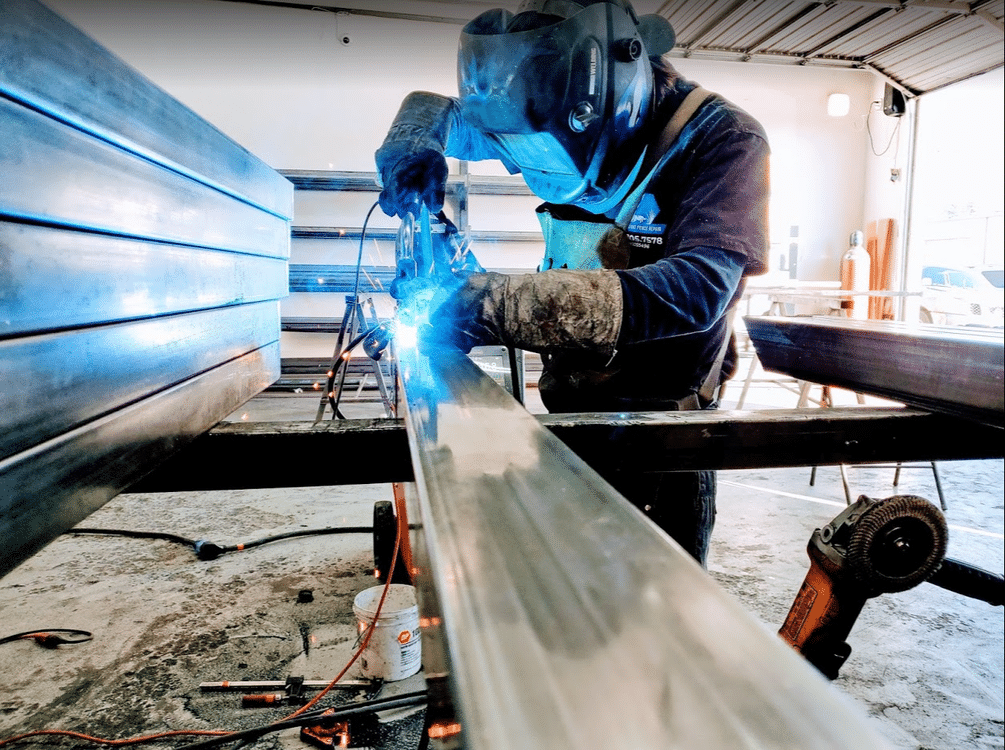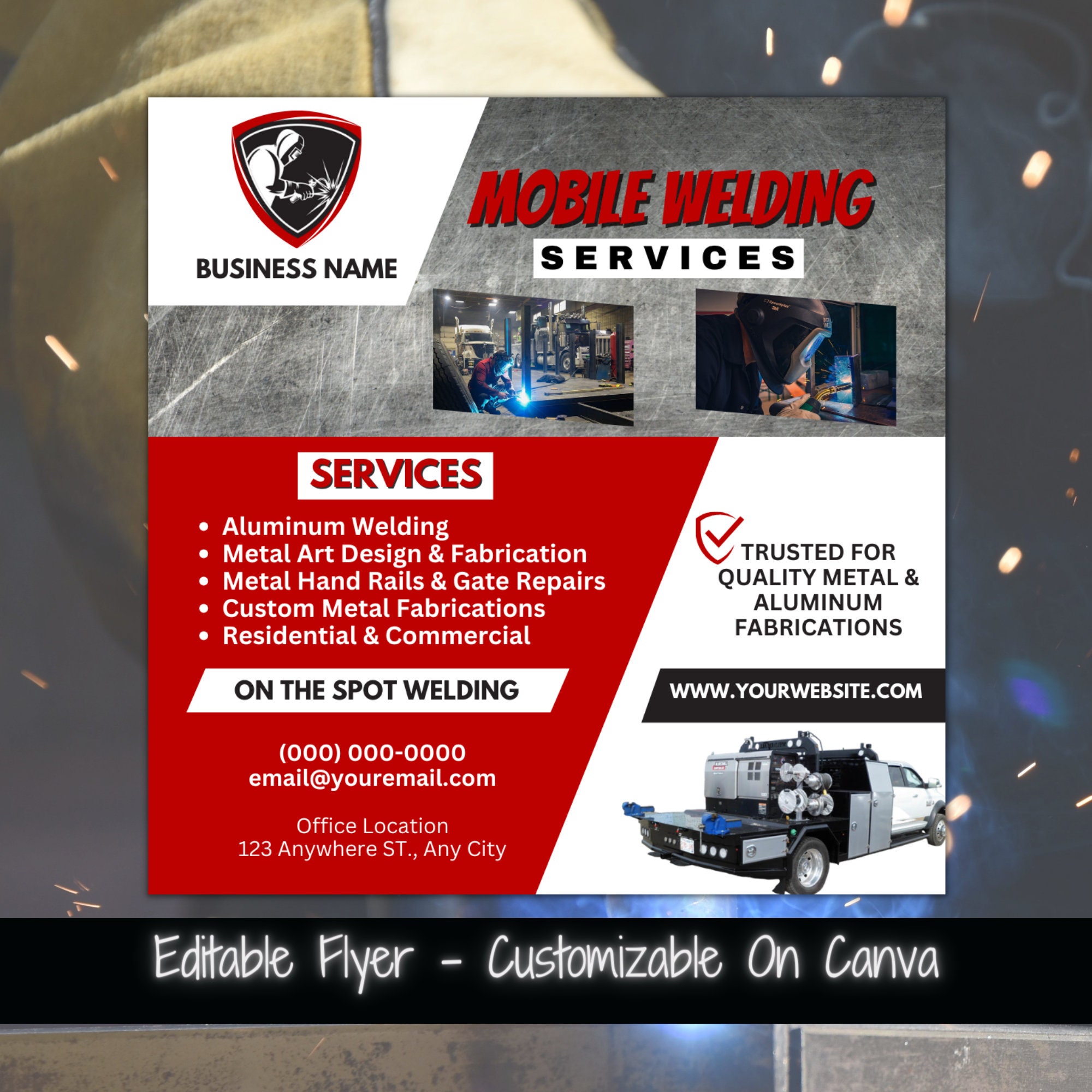Expert Welding Inspection Service for Structural Integrity
Wiki Article
Understanding the Different Types of Welding Techniques and Solutions Offered

Summary of Welding Techniques
Welding techniques incorporate a varied variety of methods utilized to join materials with each other permanently. One common approach is arc welding, which includes creating an electrical arc between an electrode and the base product to melt and fuse them together. This technique is flexible and can be used with numerous metals, making it among the most widely used welding procedures.
Furthermore, TIG welding, or Gas Tungsten Arc Welding (GTAW), is a tidy and specific welding approach that makes use of a non-consumable tungsten electrode to develop the weld. TIG welding is generally utilized for thinner products and gives excellent control over the welding process. Overall, understanding these various welding strategies is essential for choosing the most ideal approach for various jobs.
Typically Used Welding Approaches
An array of frequently made use of techniques are utilized in the field of welding to efficiently sign up with materials with each other. Among the most widely utilized techniques is Gas Steel Arc Welding (GMAW), additionally recognized as MIG welding. This approach utilizes a wire electrode that is fed via a welding weapon, along with a protecting gas to safeguard the weld from pollutants in the air. An additional usual approach is Secured Metal Arc Welding (SMAW), or stick welding, which makes use of a flux-coated electrode to develop the weld. Tungsten Inert Gas (TIG) welding is preferred for its accuracy and adaptability, utilizing a non-consumable tungsten electrode to generate the weld. Flux-Cored Arc Welding (FCAW) is typically utilized in industrial settings due to its high welding speed and portability. Furthermore, Submerged Arc Welding (SAW) is perfect for developing deep welds on thick products. These typically made use of welding approaches accommodate different demands and products, giving alternatives for different welding applications.Advanced Welding Solutions
Building upon the structure of typically made use of welding methods, the world of innovative welding solutions incorporates innovative strategies and technologies that press the borders of precision and effectiveness in product joining procedures. Advanced welding services usually involve specialized techniques such as laser welding, electron beam of light welding, and rubbing mix welding. Laser welding utilizes a highly focused light beam of light to specifically sign up with metals with minimal heat-affected zones, making it suitable for fragile or intricate components. Electron beam welding, on the other hand, utilizes a high-velocity electron beam to create deep weld penetrations in materials like aerospace alloys or dissimilar steels. Rubbing mix welding, a solid-state joining procedure, allows the welding of products that are challenging to fuse using conventional approaches, like aluminum and copper. These innovative strategies supply enhanced control over the welding procedure, causing more powerful, a lot more sturdy welds with lowered distortion and boosted overall quality.Specialized Welding Strategies

An additional specialized welding strategy is my site laser beam welding, where a very focused beam of light of light is used to join steels with minimal heat-affected zones and distortion. These specialized welding techniques showcase the variety and innovation existing in the area of welding, supplying remedies for a vast variety of commercial applications.

Selecting the Right Welding Refine
Choosing the ideal welding process is paramount in accomplishing optimal lead to steel fabrication and joining operations. With different welding strategies readily available, it is essential to think about variables such as the kind of steel, thickness, joint style, and desired end result when picking the ideal welding process - Welding Inspection Service. Among the common welding methods are Gas Metal Arc Welding (GMAW), Protected Metal Arc Welding (SMAW), Gas Tungsten Arc Welding (GTAW), and Flux-Cored Arc Welding (FCAW) GMAW, likewise called MIG welding, is appropriate for welding thin to thick steels and is versatile in various settings. On the various other hand, SMAW, or stick welding, is a trustworthy approach for outside and area welding due to its transportability and simpleness. GTAW, or TIG welding, is suitable for welding thin materials and offers exact and top notch welds. FCAW is chosen for read this welding thick products and is recognized for its high welding speeds. Recognizing the features of each welding procedure is necessary in picking one of the most suitable strategy for a specific welding task.Verdict
To conclude, recognizing the different types of welding methods and services readily available is crucial for picking the right technique for a particular job. By understanding the generally used welding approaches, progressed welding solutions, and specialized methods, individuals can make informed decisions to make certain the success of their welding projects. It is essential to consider variables such as materials, job needs, and spending plan when choosing one of the most ideal welding procedure.
From typical approaches like stick welding to sophisticated processes such as laser welding, the world of welding supplies a multitude of alternatives for joining metals together.Furthermore, TIG welding, or Gas Tungsten Arc Welding (GTAW), is a clean and exact welding technique that makes use of a non-consumable tungsten electrode to develop the weld. Advanced welding solutions commonly involve specialized techniques such as laser welding, electron light beam welding, and rubbing mix welding. Amongst the typical welding approaches are Gas Metal Arc Welding (GMAW), Protected Steel Arc Welding (SMAW), Gas Tungsten Arc Welding (GTAW), and Flux-Cored Arc Welding (FCAW) By being mindful of the typically utilized welding approaches, progressed welding solutions, and specialized strategies, people can make enlightened choices to ensure the success of their welding projects.
Report this wiki page